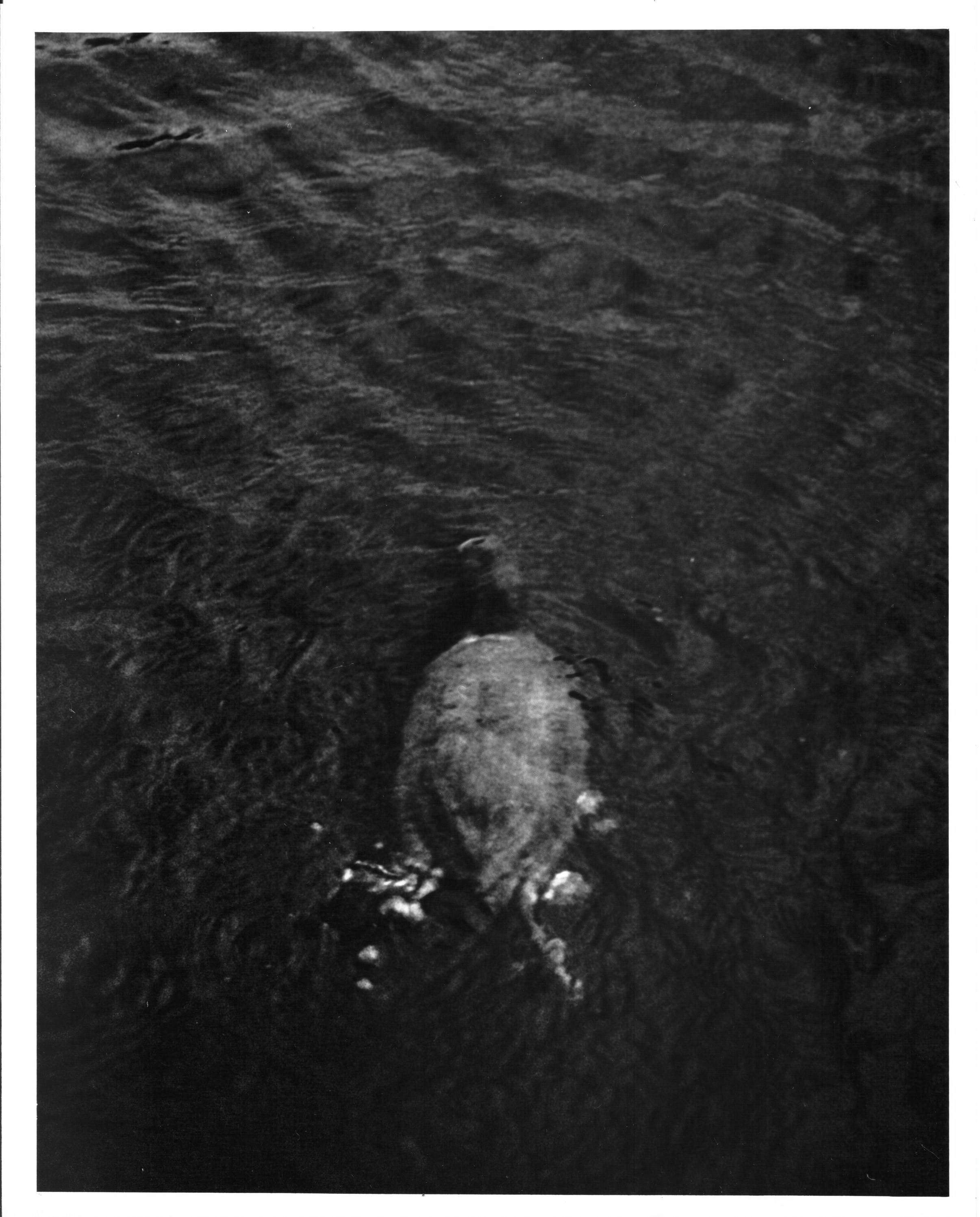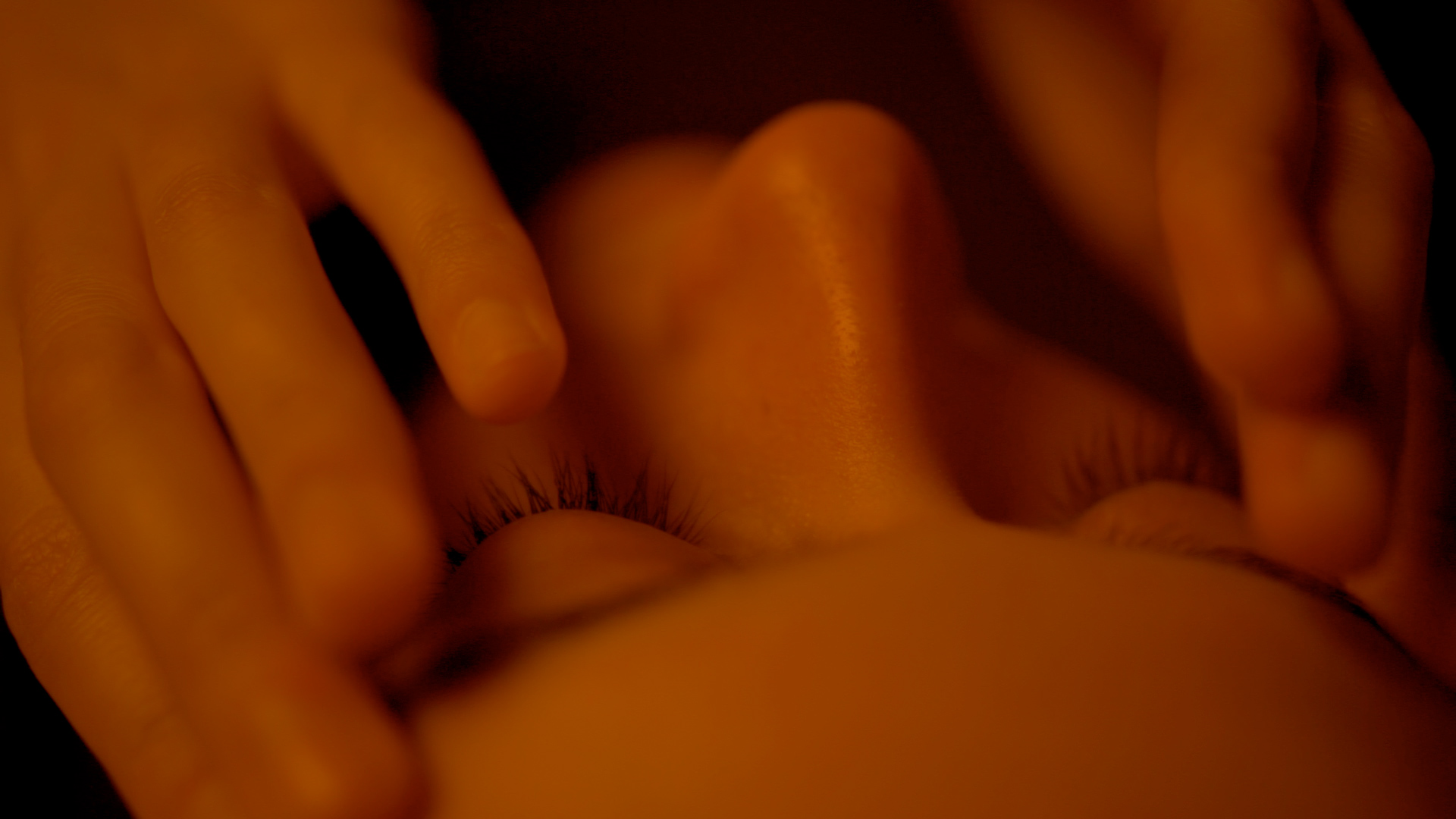
Monday, 11th
Imprinting, in psychobiology, is a form of learning in which a very young animal fixes its attention on the first object with which it has visual, auditory, or tactile experience and thereafter follows that object. In nature the object is almost invariably a parent; in experiments, other animals and inanimate objects have been used. Imprinting has been intensively studied only in birds, especially chickens, ducks, and geese, but a comparable form of learning apparently occurs in the young of many mammals and some fishes and insects. (Encyclopedia Britannica)
“I was going to the park watching the interactions of birds and experimenting with photography. I gravitated towards watching the coots, who never build nests that really last and have to constantly rebuild. I was also watching the growth of their babies. The images that interested me were the ones with a lot of movement since they almost suggested another animal, which took me back to what happens when we copy these animal sounds. It’s like putting yourself in a place where you become less of what you are. By getting closer to this idea of touch and care, you are kind of removing yourself from ‘you’ as human and it’s almost like you metamorphosise. Through this desire to touch the other, or to be cared for, or be comforted, every ‘it’ becomes almost plural. When I came back to Cyprus, I continuously recorded my mother with her cats, and I became aware that she was doing these sounds to call another animal to her. She cares for almost twenty five cats. For the first time I was also able to see a mother and a father with their kittens. Normally I always have adopted animals so I was now able to watch them breastfeed and go through these different stages of care with their mum, exactly what I saw with the birds in London. Then I started thinking about how it’s similar to the movements of our lips. So it’s like I was translating that into other animals.” – Korallia Stergides

Tuesday, 12th
Water to bathe in is just as important for birds, especially in winter. It is essential that they keep their feathers in good condition. Bathing is an important part of feather maintenance. Dampening the feathers loosens the dirt and makes their feathers easier to preen. When preening, birds carefully rearrange the feathers and spread oil from the preen gland so they remain waterproof and trap an insulating layer of air underneath to keep them warm. (rspb, uk charity for ‘giving nature a home’)
“Amongst this journey of looking at all these different elements, water was very present. Water allows us to look at other textures of care. And I was thinking about that with regards to a fountain I want to have in the space, inspired by the birds showering. I was thinking that they bathe publicly, like we see them in what for a human would be the most intimate moment or there’s just this thing of how animals are so public with this interaction of water and humans somehow retreat, like when we go into the sea or the pool. Maybe it’s because I don’t know how the birds feel when they get into the water. You essentially become weightless in water, right? Like if you are in salt water. The water assists your body to be moving, that’s why old people exercise in water. And I was looking at something my cousin just randomly said it in the sea; he said something about our hands and why they get shrivelled up when we go in the water, and it’s apparently because our bodies are trying to adapt to grasping things in the water. So our body does this thing that essentially only happens outside of water when it ages, in the water, to again hold, or to touch or grab, so our density and texture changes.” – Koralia Stergides

Wednesday, 13th
“KS: What was interesting as I was looking up cyanotypes from other artists, is that this exhibition came up, in which ‘the blue period of photography gets its own show’. I liked this idea of the cyanotype as a blue period and then the Picasso reproduction opposite my bed, ‘Child with Dove’ - it’s also from his blue period. So it was like this natural thing has melded itself together now, of different blue periods.
EV: And we also say things like ‘I am feeling blue’. Blue is the colour of the sky and the sea, it is the colour of vastness, basically. So maybe as our world gets smaller, we react with blue. That’s also interesting to look up, on the use of colour blue.”

Thursday, 14th
Blue moon
You knew just what I was there for
You heard me saying a pray for
Someone I really could care for
Without a love of my own
– Elvis Presley, Blue Moon

Friday, 15th
“In order to make myself do certain things sometimes I have to pretend that I am caring for a future self. If I can’t do something, I think, will future myself want that? It’s just a coping mechanism. Thinking that you are doing it with another even though you are on your own. Or like caring for the pets, or one of the first things I got when I came back to Cyprus was a plant, so that I could feel that this is not just an inside space.” – Koralia Stergides

Saturday, 16th
Birds have developed a fascinating adaptation called “peeking”, that allows them to sleep in risky environments. This involves opening one eye intermittently and keeping half of the brain active to monitor their surroundings. Peeking allows the animal to conserve energy while staying vigilant to potential threats. (Bangor University Study, 2020)
“Essentially the concealment of our lips makes us more reliant on communicating with our eyes because you cannot smile or things like that through the mask. Which is interesting, because I’ve been developing the performance with eyes closed, and I was thinking, god, this doesn’t even make sense unless everyone’s eyes are closed. Because they almost get more focused. Closing your eyes draws attention to other parts of your body and you start to think about its form more, it extends and you are extended. Initially, the reason why the eyes were closed was because I was looking at the sun and I’ve been doing this experiment of putting my hands across my face, to think of the visual experience in more nuanced terms. Well you get different shades of orange or yellow or like depending on the light and how if it’s bright, obviously the orange is going to become redder, and then you open your eyes. But if you move your hand in front of your face, you can still track movement with your eyes closed because of the shadow. So, because I was looking at how birds move, how do you mimic a bird essentially, and I was thinking maybe people will have to move around in the space, but then your own hand can create this, let’s say maybe through discovering your face and your lips, you can start to associate these movements with these things. I just thought it was interesting if in the performance you remove the eyes and you are just focused on the sound.” – Korallia Stergides

Sunday, 17th
Say "Night-ie night" and kiss me
Just hold me tight and tell me you'll miss me
While I'm alone and blue as can be
Dream a little dream of me
– Ella Fitzgerald and Louis Armstrong, Dream a little dream of me
